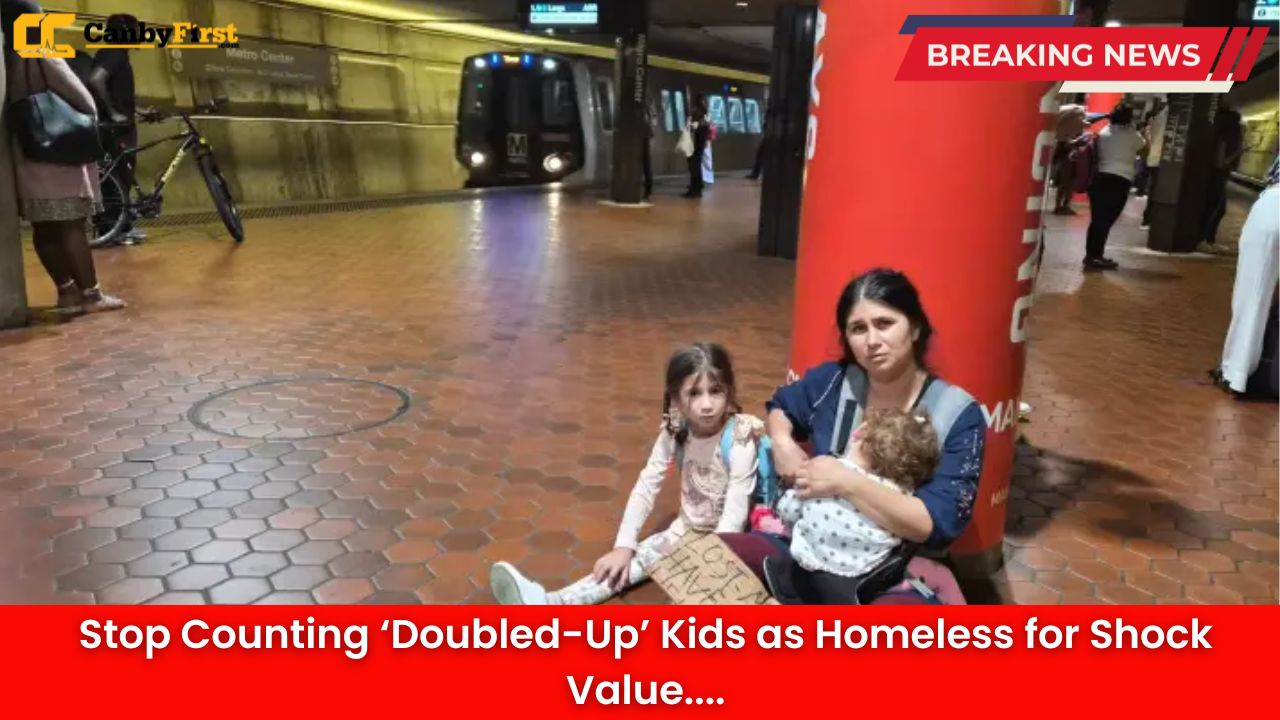New York, US:
A growing debate is sweeping the United States over how the federal government and advocacy groups classify “homeless” children—particularly those living temporarily with relatives or friends, often termed “doubled-up” kids. Critics argue that counting these children as homeless inflates statistics and fuels sensational narratives, while supporters say the numbers help highlight a broader crisis of housing insecurity.
Under the McKinney-Vento Homeless Assistance Act, students who lack a “fixed, regular, and adequate nighttime residence” are considered homeless. This includes those living in shelters, motels, cars, or “doubled-up” housing arrangements. The definition has been praised for capturing the hidden side of child homelessness, but some lawmakers, analysts, and educators are pushing back, questioning whether the term has been applied too broadly.
Also Read
Challenging the Numbers
Recent education reports suggest that nearly 1.2 million students across the country are labeled as homeless. However, according to conservative estimates, only about 15–20 percent of these children actually live on the streets or in shelters. The majority are “doubled-up,” staying temporarily in a relative’s spare room, a friend’s basement, or another stable household.
Policy researcher and education analyst Jenna Morales told reporters that “while housing insecurity is a serious issue, using homelessness as a blanket term for all forms of instability waters down the severity of the crisis faced by truly unhoused children.”
Opponents argue that this inflated data distorts public understanding and encourages media outlets to use shocking headlines and imagery that do not reflect the true scope of conditions. They believe federal funds should focus on the most vulnerable populations—those literally without shelter—rather than those in temporary but stable living arrangements.
Advocates Defend the Current Definition
On the other side, advocates for homeless youth maintain that “doubled-up” children face instability that can be just as damaging as street homelessness. They point to frequent school transfers, emotional stress, overcrowded conditions, and the constant risk of being forced to move again.
“Families who double up are often one argument away from being on the street,” said Melissa Sands, a school social worker in New Jersey. “It’s not about shock value—it’s about recognizing that these children are living on the edge.”
Proponents of the broader definition say it ensures schools and community organizations can provide critical support such as transportation, meal programs, and counseling services to students before they end up completely unhoused. Removing these children from the count could, they warn, eliminate access to lifelines that prevent deeper crises.
The Funding Question
Central to the dispute is how federal and state funding for homeless education programs is allocated. The U.S. Department of Education’s Homeless Children and Youth Program provides assistance based partly on reported numbers of homeless students. Critics argue that by counting doubled-up students, schools may be inflating their data to secure more funding.
However, educators push back on that notion, saying most administrators follow strict reporting protocols and that the complexity of modern housing insecurity requires nuanced thinking, not blanket dismissals.
“The people accusing districts of inflating numbers have never been in a school office trying to find a stable address for a family of six sharing one bedroom,” said Patrick Norris, a superintendent in Arizona. “Labeling those children as anything less than at risk is disingenuous.”
Calls for a Refined Definition
Some policymakers are proposing a middle ground—introducing a new category within federal reporting systems to distinguish between sheltered, unsheltered, and doubled-up minors. This, they say, would bring transparency without undermining the visibility of highly mobile children.
Educational equity groups, too, are calling for more precise metrics that better reflect the realities of family housing instability across rural, suburban, and urban districts. They argue that the conversation should shift from semantics to solutions: expanding affordable housing, building more emergency shelters, and improving federal rent assistance programs.
“This debate shouldn’t be about who’s inflating what,” said Andrea Lee, a policy director at a children’s advocacy nonprofit. “It should be about ensuring every child has a safe place to sleep—tonight and every night.”
Political Undercurrents
The controversy has also drawn political undertones. Some conservative lawmakers have accused advocacy groups of “weaponizing” homelessness data to push for increased spending and promote alarmist narratives. Liberals, meanwhile, counter that attempts to narrow the definition amount to erasing vulnerable populations from the nation’s radar.
As the issue gains traction, school boards, city councils, and parent organizations across the country are weighing in. Behind the statistics are real families trying to navigate high rents, eviction risks, job instability, and scarce affordable housing options.
A Broader National Reckoning
What began as a disagreement over classification has evolved into a reflection of the nation’s housing crisis. From New York to Los Angeles, from small-town Iowa to the Texas suburbs, families with children are confronting an economy where rent often consumes over half their income. For many, doubling up is not a choice but a survival strategy.
Yet the question remains: does “doubled-up” mean homeless, or does it represent another phase in a long continuum of housing insecurity? Experts say the answer may depend less on legal definitions and more on whether society is willing to address the systemic causes.
Until then, the debate over “doubled-up” children will likely continue—straddling the line between compassion and classification, advocacy and accuracy.
FAQ
Why are “doubled-up” children counted as homeless now?
Because federal law includes those without stable, adequate housing, even if they temporarily stay with others, in the official definition of homelessness.
What’s the main argument against including them?
Critics say it exaggerates homelessness statistics and misleads the public, diverting funds from those truly without any shelter.
How does this classification affect schools?
Schools receive funding and support services based on these counts, which shape programs for transportation, meals, and counseling.
What could change in the future?
Lawmakers are considering clearer categories to differentiate between unsheltered, sheltered, and temporarily housed children.
What’s at stake in this debate?
At its core, it’s about fairness in resource distribution, accuracy in reporting, and the moral obligation to protect children in precarious living conditions.












